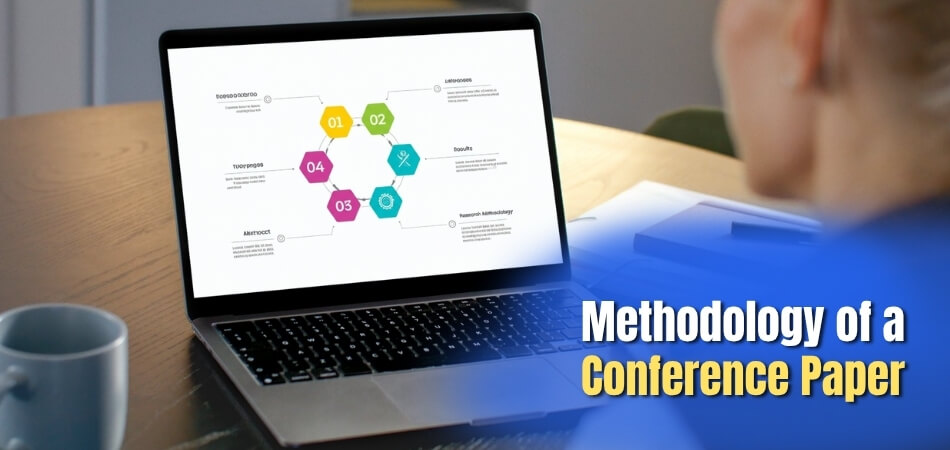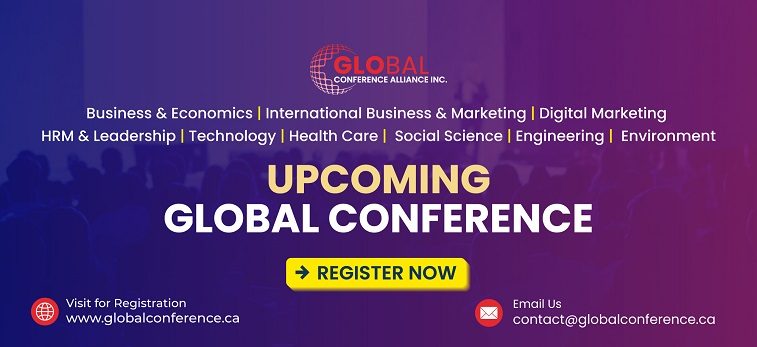A conference paper’s methodology is an essential section that demonstrates the research process. Many people wonder about the details of this section and might have in mind what is the methodology of a conference paper. It explains the steps and tools used to answer the research question clearly. Understanding this can help readers trust the study and see how it fits together with the results.
The methodology of a conference paper describes the research design, who or what was studied, how data was collected and analyzed, and any ethical steps taken. It should be clear and brief, giving enough detail for others to understand the process without going too deep. This helps show the study was done carefully and fits the goals of the research.
If you want to learn more about how to write this part well, keep reading. This article explains all the key points you need to know. You will find simple explanations about each step so your methodology section can be strong and easy to follow. It covers everything to help you share your work clearly.
What Is the Methodology of a Conference Paper?
Understanding how to explain your research is just as important as doing the research itself. When writing a conference paper, the methodology section helps others know exactly what you did. Let’s look at what makes a strong methodology section so you can clearly share your work.

Research Design
Every project starts with a plan, and this is where you explain it. First, say whether your research is based on numbers (quantitative), words (qualitative), or both. Then share why this was the best way to explore your topic. Also, link your method to your goals, so readers know how your plan fits your purpose. If you’re preparing for global events like upcoming conferences in USA, Canada, or any other country, keeping your methodology clear and brief is key.
Participants and Data Sources
Some research is done with people, others with things like documents or data. If you worked with people, describe who they were, how many joined, and how you picked them. If you used existing data, explain where it came from and how you chose what to study. This helps others trust that your information was chosen carefully and makes your work feel more solid and complete.
Data Collection Tools
Not every study uses the same tools, so here you explain what helped you gather information. This could be a survey, interview questions, or even a software program. Say if you made the tool yourself or used one already made. If numbers were involved, also mention how trustworthy the tool was. This gives your work a clear base and helps others know how the data was collected.
Collection Procedures
This is where you walk through what you actually did, step by step. Did you give out a survey? Did you run an experiment? Did you talk to people? Say who collected the data, where and when it happened, and how long it took. If there were special steps or rules, talk about those too. This part helps others follow along and even repeat the steps if they ever want to.
Data Analysis
After getting your data, you need to explain what you did with it. Did you use numbers and charts? Or did you look for patterns in what people said? Maybe you used a special program like SPSS or NVivo. Say what steps you took to make sense of the data and why those steps made sense for your kind of research. Also, if you had any missing pieces or odd results, mention those quickly.
Ethical Considerations
Research often includes people, and you need to treat them right. If you got permission from them and from an ethics board, say so here. Let people know how you kept names private and stored data safely. Even if your study wasn’t with people, this shows you followed the rules. It adds trust and makes your paper stronger in the eyes of others reading or reviewing it.
Limitations
No method is perfect, and it’s okay to say that. If your study had fewer people than planned or if the data was harder to get, explain that briefly. Also mention how you tried to work around these issues. Even a small note here shows honesty and can make your paper feel more real and thoughtful. This short part can help reviewers see you took care while doing your work.
Sharing your method helps others understand how you got your results. It builds trust in your research and shows you were careful. Being clear and honest makes your work stronger. This way, your paper will stand out and be easier to follow.
How to Structure the Methodology Section in a Conference Paper?
When you’re writing a conference paper, how you explain your methods can really affect how your audience connects with your work. A clear setup helps people follow along without confusion. Let’s look at how to keep things simple and organized.
Research Design
Start by sharing the big idea behind your research. What were you trying to find out? Talk briefly about the type of study you used—was it based on experiments, surveys, or something else? Keep your explanation short and easy to follow. You don’t need fancy terms—just explain the idea clearly so anyone can get it. This sets the base for everything else that follows and helps people understand why your study matters.
Tools and Materials
Let your readers know what you used to carry out your research. This could be software, lab tools, or even everyday items, depending on the topic. You don’t need to list every little thing—just the key items that made a difference. This part helps people see what supported your research and gives them a clearer picture of how it worked from the inside.
Step-by-Step Process
Give a clear list of steps you followed during your work. Think of it like a recipe—first you did this, then that, and so on. Try to keep each step short but easy to understand. Back when you had to introduce at a conference, the clarity of your methodology section often sets the tone for how well your research is understood, so this part really matters. Make it as smooth and simple as possible.
Why It Matters
Explain why you chose this path for your research. Was it the best way to get answers? Did it suit your topic better than others? Use simple words to say why this plan worked best for you. It helps your audience trust your work more when they know you thought it through. You don’t need long reasons—just make it clear and to the point.
Keep It Clear
Use short sentences and avoid hard-to-read words. Break long parts into smaller ones so they’re easier to follow. Think of how you’d explain it to a friend who’s never heard about your topic. The easier it is to read, the better people will understand it—and that’s the goal. Making it simple doesn’t make it weak, it just makes it clear.
Strong methods don’t need complex words. They just need to be shared clearly and simply. When your explanation is easy to follow, your work shines. Keep it straightforward to make the best impact.
How to Explain Your Data Collection Process in the Methodology Section for a Conference Paper?
Explaining how you collected your data is an important part of writing a good conference paper. It helps others understand where your information came from and how you got it. Here’s a simple way to break it down clearly.
Data Sources
Start by telling where your data came from. Was it from books, websites, interviews, surveys, or something else? Mention the sources in a simple way so others know your data is real and trusted. This helps people believe your work. If you collected the data yourself, explain how you got it. Be honest and clear about every source you used.
Collection Steps
Now talk about what you did to collect the data. Did you ask people questions, run tests, or take notes from videos? Share the steps you followed. Try to keep things in the order you did them. This part tells the reader how much effort you put in and helps them follow your work easily.
Time and Place
Say when and where your data collection happened. For example, did it take a week or a month? Did it happen in your home, at a school, or in a park? These details make your paper more complete and help others understand the background. Even simple information like dates and places adds value to your explanation.
Tools Used
If you used any tools to collect data, mention them here. It could be a mobile phone, a notebook, a Google form, or even a stopwatch. Don’t just list them—also say why you picked those tools. This helps readers understand your way of working and shows that you chose your tools with some thought.
Challenges Faced
Sometimes things don’t go as planned. It’s okay to say what went wrong or what was hard while collecting data. Maybe people didn’t answer questions, or maybe your tool didn’t work. Share how you handled those moments. It shows that you kept going and still got useful data in the end.
Explaining your data collection clearly makes your paper stronger and easier to understand. It shows others that your work is trustworthy and well done. Being honest about your process, including any problems, helps build confidence in your results.
Difference Between Methodology in a Conference Paper vs. a Journal Paper
When you’re deciding how to write the methodology section, it’s important to know that conference papers and journal papers aren’t the same. The way you explain your methods should match the type of paper you’re working on. Here’s a quick comparison to help you see the main differences.
| Aspect | Conference Paper | Journal Paper |
| Length | Shorter and more concise | Longer and more detailed |
| Detail Level | Focuses on key methods only | Explains methods thoroughly |
| Purpose | Quick, clear explanation for immediate understanding | Full explanation for deep understanding |
| Audience | Busy readers at events needing fast info | Researchers seeking complete details |
| Examples & Data | Limited examples or data due to space | Includes extensive examples and data |
| Justification | Brief reasons for method choices | Detailed reasoning and comparisons |
| Tone | Direct and to the point | More explanatory and formal |
Understanding these differences can help you tailor your writing for the right audience. Keep your methodology clear and focused for conferences, and save the detailed explanations for journal papers. This way, your work will always be easy to follow and effective.
Common Mistakes to Avoid in the Methodology Section of a Conference Paper
Writing the methodology section of a conference paper can be tricky, and small mistakes often slip in without notice. Understanding what to avoid can help you create a clearer, more effective paper. Keep reading to find out how.
Too General Descriptions
Many writers don’t give enough details about what they did in their research. Without clear steps, readers get confused and cannot repeat the work on their own. Every important action or tool should be described simply and fully in your paper. Leaving out small things can make your research look weak or incomplete to others. Always explain the process clearly so readers know exactly how you worked.
Missing Assumptions
A lot of times, people forget to share the basic ideas or rules they used. Assumptions are those starting points that everyone needs to understand before reading the rest. If you don’t mention them, readers may not follow your logic correctly. Even if they seem simple to you, write them down clearly on paper. It helps everyone understand what you believe or expect before the study starts.
Ignoring Research Questions
Every good paper should show how the methods help answer the main questions. If there’s no connection, your work will seem random and confusing to people. Readers want to see why you chose each step and how it fits the big picture. Before you finish your section, check if each method matches a research question. That will make your paper look organized and clear.
Disconnect With Results
Sometimes the plan you make and the results you show do not fit together well. Another frequent issue is failing to design a methodology that cleanly supports the results section. This disconnect can make it harder to clearly write results for conference paper in a way that reflects your stated approach and data collection process. Make sure the way you collect and show data matches your original plan.
Skipping Limitations
Many writers forget to say where their methods might not work very well. This mistake can make people think you are hiding something important in your paper. Always write about any limits or problems that your methods could have. Being honest about weaknesses helps people trust your research and understand the results better. Readers respect a paper that shares both strengths and limits openly.
If you avoid these mistakes, your paper will be much easier to read. Good methods help everyone see your work in a clear way. Remember, sharing details builds trust with your readers every time. A strong methodology section makes your research stand out more.
FAQs About What Is the Methodology of a Conference Paper?
To help you understand the conference paper methodology, here is a brief frequently asked questions section. These questions and answers cover useful points that many people want to know. If you still have questions, these FAQs might help make things clearer and easier to understand.
What Does Methodology Mean in Simple Words?
Methodology is the plan or steps you use to finish your research. It explains how you collect information and what tools or ways you use to do it. This helps others understand your process and trust your results. If your methods are clear, your work is much easier to follow.
Why Is Methodology Needed in a Conference Paper?
The methodology section shows exactly how you did your research. It helps readers know if your findings are trustworthy and if they can repeat your work. By sharing your steps, you make your research open and easy to check. A clear method section builds trust in your conference paper.
How Is Methodology Different From Methods?
Methodology is the overall plan and thinking behind your research, not just the actions you took. Methods are the specific steps you used, like surveys or interviews. Methodology includes why you picked those steps and how they fit together. Both are important but serve different roles in your paper.
What Makes a Methodology Section Strong?
A good methodology section is clear, simple, and explains every step you took. It shares why you chose certain ways and tools, not just what you did. Readers should understand how you got your results from reading it. This makes your research look more solid and believable.
Can I Use More Than One Method in My Paper?
Yes, you can use more than one method if it fits your research needs. Sometimes combining different ways, like surveys and interviews, gives better results. Make sure to explain each method clearly so others can follow what you did. This helps people understand your work better.
What If I Change My Method During Research?
If you change your method while working, always mention it in your paper. Explain what you changed and why you made the new choice. This shows honesty and helps readers understand your final process. Sharing these changes can even make your work look more thoughtful.
How Do I Choose the Right Methodology?
Think about what you want to find out and pick methods that fit your goal. Look at what has worked for other people with similar questions. You can also ask teachers or read books for good ideas. Choosing the right way helps you get the best results for your topic.
Is Methodology The Same for All Subjects?
No, methodology can be different based on the subject and type of research. Science topics might use experiments and numbers, while history projects could use books and old documents. Pick what fits your topic best and explain your choice. This makes your paper fit your subject well.
Do I Need To Use Big Words in My Methodology?
You do not need to use big or hard words to write your methodology. Simple and clear words are much better because everyone can understand them. Focus on explaining your steps, not making the paper sound complicated. The goal is to make your process easy to follow.
What Happens If I Forget to Add a Method Step?
If you leave out an important step, your readers might not trust your results. They may not be able to repeat your work or check if your findings are correct. Always review your paper to make sure every step is included. This will help others understand and trust your research.
Conclusion
Understanding what is the methodology of a conference paper? Simply means knowing how to explain the steps you took in your research clearly and briefly. This section tells others how you gathered and analyzed data so they can trust your work and follow what you did easily.
To make your methodology strong, keep your explanations simple and organized. Focus on sharing key details and be honest about any challenges you faced. Good luck with your writing, and may your conference paper impress and inspire your readers!







